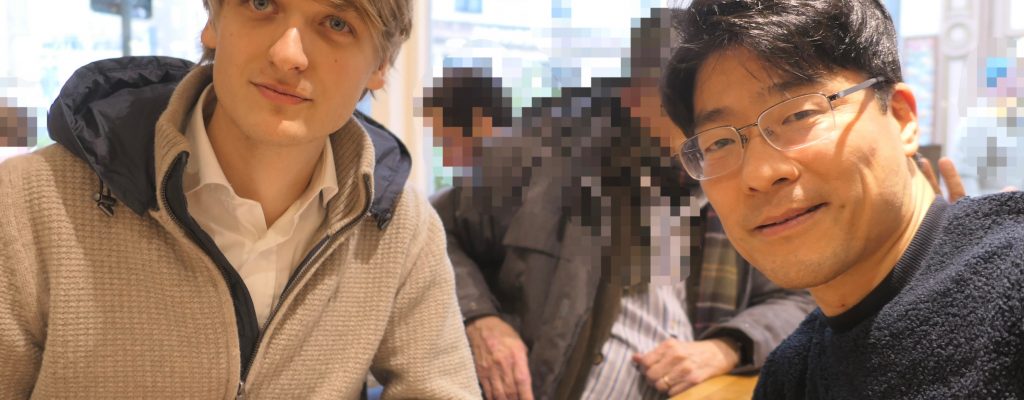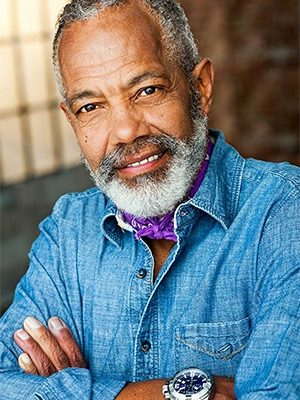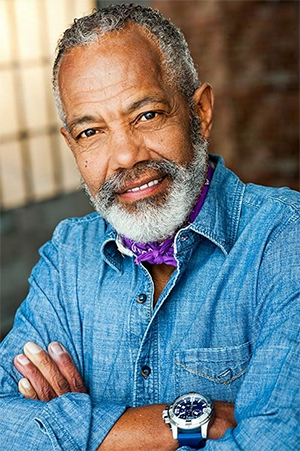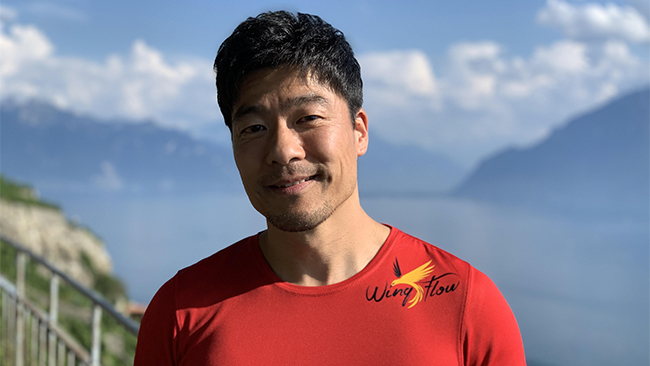
Mark Stas is a Belgian, South Korea-born martial artist, actor, screenwriter, and producer. The founder of a martial art, the Wing Flow System, he starred in features such as Borrowed Time 3 and English Dogs in Bangkok. Besides directing, writing, and producing short movie Emerging from the Shadows (in which he acted), he wrote At the Edge, a short movie that is based on his own experience and which he acted in.
He was an award winner in three different projects he was involved in, namely Emerging From the Shadows, At the Edge, and Borrowed Time 3. An award-winning choreographer for Borrowed Time 3, he received the award of “Best Ensemble” at the “Los Angeles Actors Award” for his acting as Inspector Chan in Borrowed Time 3.
One the newest projects Mark Stas is being involved with is Abel Ernest Tembo’s feature Funayurei, which is based on a screenplay by Grégoire Canlorbe, and in which Mark Stas both serves as an executive producer and as a lead actor alongside Manuel Werling and Ron Smoorenburg.
Grégoire Canlorbe: You were given the nickname of the Belgian Bruce Lee. Do you find it to be somewhat reductive?
Mark Stas: It all depends on the point of view, but it’s a real honour to be compared to him of course. He is the legend himself, unbeatable in many aspects whether it’s in his martial arts spirit and skills, his personal training creativity or his performance in movies. He paved the path for so many and surely inspired me along my martial arts path.
Strangely I never really practiced his JKD. But I share 100% his tremendous focus and determination to become the best in what he did.
I could only say reductive in the sense that I developed differently in martial arts: inspired by him to become the best possible version of myself through 100% dedication and personal training.
Grégoire Canlorbe: Do you believe Bruce Lee to have been offered an appropriate treatment in Quentin Tarantino’s Once Upon a Time in Hollywood?
Mark Stas: Here has been a lot polemic. I can underling though the react of his daughter Shannon Lee.
But I also think it’s mere a point of view and although I’m a huge fan of Bruce Lee myself, sometimes there is a particular reason. I read for example what Mike Moh (who portrays Bruce Lee in Once Upon a Time in Hollywood) wrote in his interview:
“In the film it was a challenge I got the first point — I knocked him on his ass first. And Bruce at that time was so cocky and maybe got a little excited and he didn’t know Cliff Booth has killed dozens of people with his bare hands — and that’s what people may not realize up until that moment in the film,” he said. “It’s a hugely important scene — what better way to show how dangerous Cliff is than for him to show up and even match him for a little bit with Bruce?”… “I can see how people might think Bruce got beat because of the impact with the car, but you give me five more seconds and Bruce would have won,” Moh continued. “So I know people are going to be up in arms about it, but when I went into my deep dive of studying Bruce, he more than anybody wanted people to know he’s human.”
But we all know how big his influence was and still is. They forget maybe he was cocky but in the sixties, times weren’t as tolerant as today towards Asians (I recall the fact that Hollywood preferred David Carradine over Bruce Lee because he was too Asian…). And to survive in the world, especially in the movie world he had to be strong and prove himself.
Such a presentation of Bruce Lee can never destroy his inspiration and knowledge he left in this world even after 50 years.
Grégoire Canlorbe: How do you sum up the Wing Flow System, and its specificities with respect to the Wing Chun?
Mark Stas: It’s a personal martial art vision which wasn’t really meant in the beginning to be promoted publicly.
Highly influenced by Wing Tsun, and trained by the best masters in this particular style, I went for personal reasons my own way after 33 years martial arts training. It’s characterised by highly precise and perfect controlled attacks and defences, which are linked to a highly developed economy of motion and specific body mechanics. On top of that it has the soft-hard (yin-yang) aspect woven in the actions, where especially in close quarter it excels. When linked to a strategy and tactics, one will know that power or speed alone can be beaten (look at The Art of War to understand how strategy is woven into intelligent action).
The difference with Wing Chun is that with everything I learned, studied and the experience I gathered, I had to kick out many movements or concepts in order to find something that could fit my needs as a martial artist. Many call it an improved version but others can claim their so called traditional wing chun as better with the full curriculum (but what serves theory if in practise they lack understanding of principles and body mechanics, let alone when demonstrating it…).
I simply put it as a personal expression, thanks to my experience and hard work. Since it’s a personal system, it’s not always easy to structure for others a system that personally fits. But there exist a full teaching program where the most interesting part starts after the core levels (we distinguish a basic core, intermediate and advanced core block): all these levels are mandatory levels to develop the practitioner. Compare it also to for example Karate where at reaching the black belt, real training can start.
Wing Flow System (WFS) has a strong but simple self defence concept which attracted the main instructor of the RAID (Special Force) in Lyon, France and many champions and high level champions in Brazil or Thailand witnessed WFS with success. People just need to understand that with WFS you enter in the ‘art’ and not purely competition area. Long term vision and development are essential since we all grow older and the bodily capacities and mind changes over time. I place WFS in the category of longevity martial art without being too much mystic about skills. It’s all about correct use of body structure, hard and persistent training and of course correct guidance if speaking about in-depth details.
But as they say, there is no accounting for tastes.
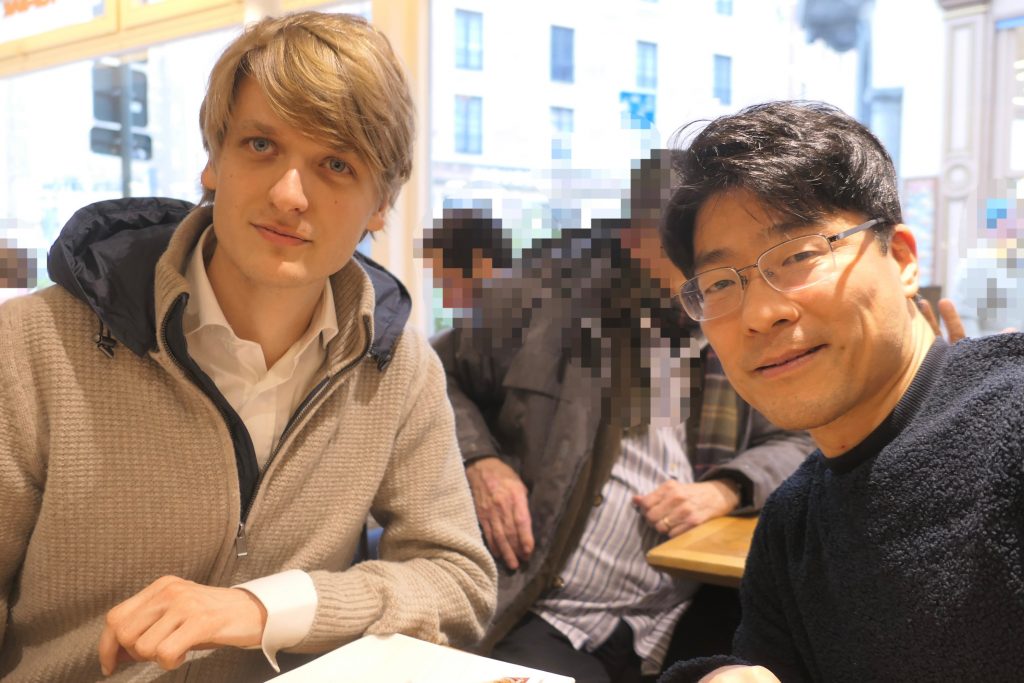
Grégoire Canlorbe: How do you react to the claim that, just like absolute truth in the field of ideas is unattainable and only approachable, and only approached through competition between ideas, perfection in the field of martial arts is unattainable and only approachable, and only approached through the experience of fighting?
Mark Stas: In martial arts what is truth? How to measure? Your question is a delicate one.
Every martial art has a specific purpose, a sense. It all started with the origin of a martial art and how it developed over the years.
We are largely influenced by what is on social media or the broadcasted highly paid boxing, MMA fights and so on. Sports gather people or create a certain atmosphere but martial arts practise is to me more a personal and individual fascinating way of life. You become a specialist when you train what is necessary to become one, especially in martial arts. It’s true that is has been proven that certain arts have more potential to be victorious than other arts. But in my opinion, why some martial arts fail in the sports area is mainly because of the lack of good instructors who can teach the specific combat concepts useable in combat sports.
Ironically a martial art has limits in the sports area due to the limits imposed. But the reason why it fails in the sports area is because 99% of all martial arts practitioners don’t train as intensively as boxing or MMA practitioners who compete. Martial arts have a lot of techniques whereas in combat sports not as many techniques are necessary: an extraction is needed and these must be combat ready.
Martial artists are in general more lazy and live on false hope. I can say as a martial artist I train a lot. But I couldn’t even compare to high level sports athletes who train 5 times more than me. Imagine the average martial artist… But martial arts compensate this comparison in a ring or on the mat by training methodologies unique in their genre.
But again, there exist all levels of martial artists, which go from horrible to excellent. It takes experience and an eye for details to detect great from good and mediocre from decent. When I improve my martial arts skills, I want to come to perfect execution in the feeling of it. I’m a fervent believer of practicing one movement a thousands times, which can be a beginners advice but absolutely to an advanced martial artist it will become a must to go the level of excellence.
Grégoire Canlorbe: How do you assess that movie saga starring Donnie Yen as Ip Man?
Mark Stas: Donnie Yen did a great performance in Ip Man and it contributed highly to the fame of Wing Chun. He is a fantastic martial arts actor and he deserves the gory he worked so hard for.
But distinguish movie and real Wing Chun practice. If I have to use my critical martial arts eye, it’s very well choreographed but a minor detail I would mention is that some actions are exaggerated. But that’s mere my own opinion. As a huge Wing Chun fan, I look forward seeing new Wing Chun movie creations.
Grégoire Canlorbe: You’ve been in Bangkok for the filming of English Dogs in Bangkok. When comparing the Bangkok lifestyle with that of Brussels, Paris, or London, what are those differences that strike you most?
Mark Stas: I lived 3 months in Bangkok and it was a unique period in my life and my movie career started there, although it was not foreseen that way at first.
Bangkok, being a very busy metropole, it has really calming parks where I found this peace when I did my daily training. The temples and Buddhas are very impressive, which I loved a lot. I am a huge fan of Thai food and of course I enjoyed every single meal I ate there. Imagine the price quality of the food over there.
The atmosphere is different from Europe and the kindness and smiles appearing on the faces of the Thai people are unique. There exists also the other side of the city, which attracts tourists, but each has to judge for himself which beauty to discover in this amazing city.
Nevertheless I hold a very good memory thanks to Ron Smoorenburg who at first invited me over and got me involved in some movies. I could meet talented producers such as Daniel Zirilli or Dean Alexandrou and of course Byron Gibson and fantastic actors and stuntmen.
Grégoire Canlorbe: How do you sum up the tale of your dual collaboration with Ron Smoorenburg, and with Byron Gibson?
Mark Stas: It was thanks to some of my videos that Ron discovered me on social media. We communicated and he invited me over. I was very busy at that time and only after a while after a difficult period in my life I made a break and left for Thailand. He wanted to see if I was that really good: the rest is history.
He presented my to Byron, since he was still filming his English Dogs in Bangkok: after seeing our first fight scene, Byron wanted me to do a second fight scene for the same movie. Thanks to that first fight scene, I got the chance to play a part in Dean’s movie, Haphazard.
Grégoire Canlorbe: Your fight with Ron Smoorenburg is a climactic point in English Dogs in Bangkok. Please tell us about the way it was choreographed, executed, and shot.
Mark Stas: First the luck was that Ron and I were from the beginning in very good harmony, although we practice different arts. So after creating the fight scene, I always film it and overview it to make changes. We rehearsed the changes and we shot the fight scene. Ron is very good in placing the camera angle and together with Byron they shot the full fights rather quickly. Byron himself is very dynamic in the way he shoots. With a powerful editing, Ron did an amazing job and luckily I could give him some pointers helping him for my movements, and the result is very nice for my first movie appearance.
Grégoire Canlorbe: How is At the Edge exactly based on your own experience?
Mark Stas: Around 2015 or 2014, together with Tomo, my long term student and assistent we made some quality videos and he introduced me to the director Lorenzo Vanin. After a great video we created, I wrote a part of my life which was then used to create a short movie with them. I told them I will be in Thailand but we could film over there. I made arrangements to bring them over and after hard work to create the full short, we shot it in Bangkok.
I got many messages from people who found a true message and strength in it for their lives. At an emotional depth, although at a highlight in martial arts, there was this turning point, which made me to decide to take a break and leave Belgium. This short movie traces back this moment in my life (without now entering in details).
It was put visually very good by the director Lorenzo Vanin, some parts couldn’t be as I expected due to limited possibilities although I’m proud of the result. All actors did also a great job.
Grégoire Canlorbe: You’re fluent in Flemish, English, French, German, and Portuguese. Which of those languages do you find to be most appropriate to express love-related things?
Mark Stas: Luckily I only need to express my love in one language. I’m not sure if Dutch would be the easiest way to express deep feelings although I don’t speak my mother tongue so often.
Grégoire Canlorbe: How do you remember your collaboration with David Worth who served as a cinematographer on Borrowed Time 3?
Mark Stas: Knowing he would co-produce Borrowed Time 3 was a real honor! Movies like Bloodsport or Bronco Billy are memorable references in the movie world even after 35 years. His experience contributed a lot in Borrowed Time 3 and meeting him was for me a true milestone. He’s a big man.
Grégoire Canlorbe: Would you be ready to return as Inspector Chan in a new sequel to Borrowed Time?
Mark Stas: Borrowed Time has something powerful, well created by Alan Delabie, and there exist some ways to create spin offs, etc. If there would be a proposal with a good script, then definitely.
Grégoire Canlorbe: When it comes to the art of movie directing, how do you compare the respective techniques and ways of proceeding of Alan Delabie (on Borrowed Time 3), and of Taffy Edwards (on English Dogs in Bangkok)?
Mark Stas: They have their own way to create and direct movies and that’s great, cause the individual vision in creating makes the difference instead of copying the same. Both movies have a different action idea. Both directors have a different martial arts background: the Karate and Nunchaku for Alan Delabie, while Taffy Edwards loved Greco-Roman wrestling.
This also influences the action scenes they wanted to create, although I could show a more Asian fighting style in English Dogs in Bangkok. (We can’t forget that the story is based on a true story.) Some parts of English Dogs in Bangkok reminded me of some great movies, although the English touch is visible compared to Borrowed Time 3, which goes in the direction of the eighties action movies.
Grégoire Canlorbe: Would you seize the opportunity to act in a movie by Wong Kar-wai, who directed The Grandmaster starring Tony Leung as Ip Man?
Mark Stas: The cinematography is marvelous and I really loved how it was displayed. The majestic details are amazing. When I saw the movie, I totally enjoyed it. Different as the Donnie Yen’s Ip Man movies but I place it visually on a higher scale. Although many didn’t like it as much as Ip Man because the Wing Chun was less pronounced, but to me the aesthetic was perfectly woven in the action. I would definitely say yes to Wong Kar-wai.
Grégoire Canlorbe: One of your most recent achievements is Emerging from the Shadows. Please tell us about it.
Mark Stas: What started as a fight scene idea became an award winning short movie: who wouldn’t be proud of this?
I was very lucky to have Ron Smoorenburg (yes again him) by my side for the main part I created in Italy. But I left it aside due to a lack of quality at first (no budget was planned and filmed with my iPhone without a real experience). Then when one of the actors, Max Repossi died prematurely, I decided to finish the short. I created a powerful introduction and an original opening credits (which by the way won an award), I worked hard in the editing. I could get the help from my friend Lina for the Japanese part in it and thanks to the help of Tomo for the colouring, but Jan De Hul did a huge job for the main color grading. And we obtained the best possible result ever.
Finally it was a short movie in memory of Max and this sad tragedy helped me to continue to work hard to not let the project in vain.
The few articles written were more than positive and I’m very proud with my first full creation, for which I won a Special Jury Award (Best Actor) or Best Action Short, Best Opening Credits, Critic’s Choice Award (Best Director) or the Award of Prestige for Best Choreography.
Grégoire Canlorbe: What can you let us glimpse of that character you’re acting as in Funayurei—Genji?
Mark Stas: The story is very well written (thanks to the talent of Grégoire Canlorbe) and I was attracted by the character of Genji, which was presented to me. He is the leader of a mercenaries group to find the legendary Funayurei, who is like a ghost. He has this more philosophical side which is woven into his character. His fighting skills are highly efficient but very exquisite and only he would be capable to capture the Funayurei, with whom he has a certain bond.
The story has a very good intrigue between the Funayurei and Genji. We are still in a debut phase, but it promises to be a unique and very interesting movie concept. There are some high level actors involved such as Ron Smoorenburg or Manuel Werling. The director Abel Ernest has put a high standard, but I believe it can become a worthy project with story surprises. I really look forward.
Grégoire Canlorbe: Spiritually speaking, do you rather consider yourself a man from the East, or one from the West?
Mark Stas: I grew up in Europe, more precisely in Belgium but I traveled a lot around the world. I visited Asia around 7 times. But deep inside I was always attracted by the Asian culture besides of course martial arts, which were since my childhood my biggest passion.
I think I’m spiritually more Asian but with a European touch. I was deeply influenced by Asian books such as Art of War, Hagakure, Tao Te Ching and the philosophy of Bruce Lee. Although I love the readings of Aristotle, Marcus Aurelius or Paulo Coelho. Martial art practice goes hand in hand with spirituality: form training and individual training are tools to develop one’s spirituality.
Grégoire Canlorbe: Thank you for your time. Is there anything you would like to add?
Mark Stas: With passion and pursuing one’s dreams and vision, a lot can be achieved. Never let negative critics abandon your believes. Work hard, surround yourself by the best, cooperate intelligently cause no one can do everything by himself and go for it. Thank you for this interview Grégoire.
That conversation was initially published on Bulletproof Action, in May 2023
